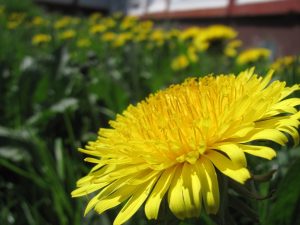Do you have a lawn that is just beginning to green? While there’s nothing like that first flush of spring growth, following are a few tips to keep your lawn healthy all year long.
- Make sure to fertilize regularly over the growing season. Fertilizer helps keep your grass green and healthy. A healthy, robust lawn not only looks better, but keeps the weeds and diseases away. When lawns aren’t fertilized regularly, weeds can more easily establish in patchy areas between plants. Regularly fertilized lawns don’t have patchy areas, and weeds have a more difficult time establishing. This means that even a low-maintenance lawn will need regular fertilization. A good tip is to fertilize on the major summer holidays: Memorial Day, Fourth of July, and Labor Day. Please note that no fertilizer is required early in spring – the plants don’t need it and they won’t take it up!
- Make sure your mower blades are sharp. Dull blades create jagged grass edges, which are more difficult to heal. Jagged edges on grass can also increase the incidence of disease. If you notice white thread like material on the tips of the grass blades after mowing, that’s a good indicator that your mower blades are too dull.
- Mow according to height. Instead of following an ‘every-Sunday’ rule of lawn mowing, pay attention to the height of your plants. Lawns should be kept between 2.5 and 3.5” for optimal plant health. When mowing, stick to the 1/3 rule – only take 1/3 of the height off each time. Any more removed will stunt the plant, causing slowed growth and susceptibility to disease.
- Leave the lawn clippings on your lawn. All those lawn clippings can add valuable nutrients back to the soil and to your plant. If you’re following the 1/3 rule, those clippings will only be around a few days after mowing before they break down. Not only does this mean you won’t need to fertilize as often, but you won’t have to work as hard hauling around clippings.
- Only mow when the plants are dry. Wet grass will clump, making it more difficult to break down. Clumps can smother plants, creating dead spots if big enough. And wet grass can be slippery on slopes, which is never a good combination when working with machines. Save your mowing for dry days!




